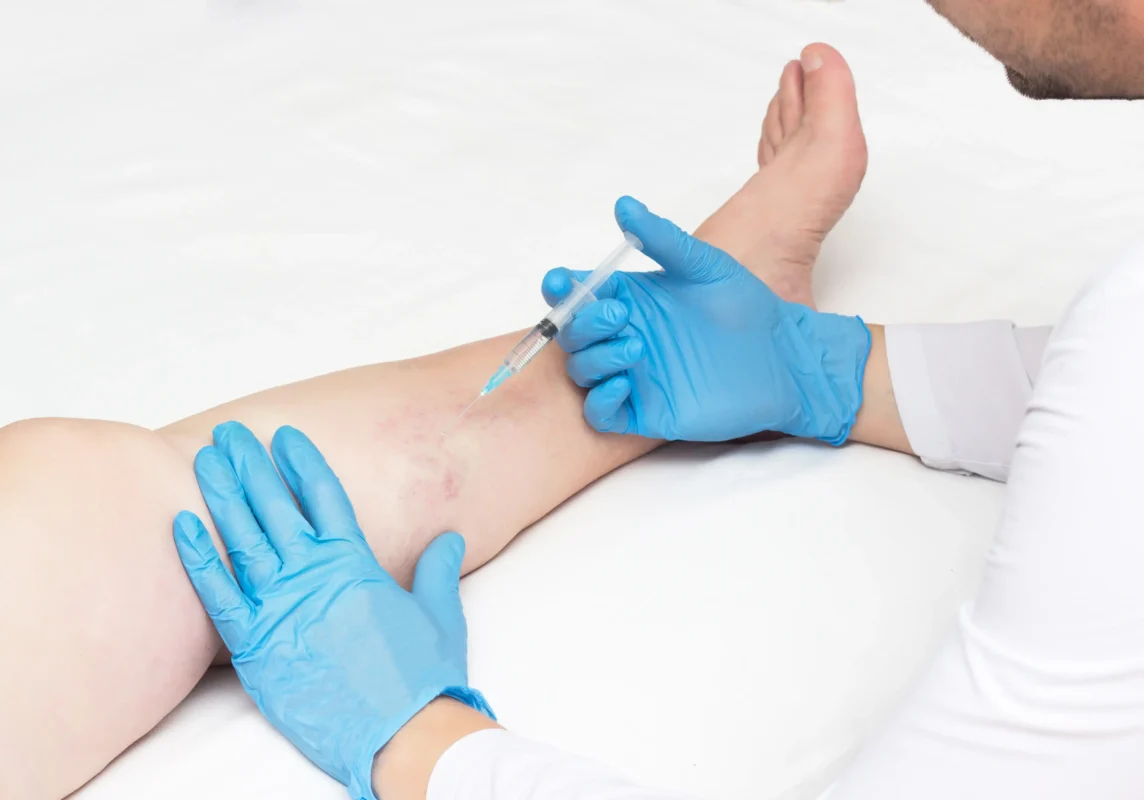What is the most effective treatment for varicose veins?
Varicose veins are larger, raised veins that can often be seen on the legs. They can cause aching or even pain and can be unsightly. Which treatment is right for you will depend on a number of factors, including the severity of your varicose veins and your overall health. Your vein doctor will advise you on the best course of treatment after a thorough evaluation, which may include a discussion of your symptoms, a physical examination, and ultrasound tests.
The following are some of the most effective treatments for varicose veins.

#1. Endovenous Laser Ablation
The most effective treatment for varicose veins is endovenous laser ablation. This is a minimally invasive procedure that uses laser energy to heat and destroy the vein. The laser is inserted into the vein through a small incision in the skin. The heat from the laser damages the vein, causing it to collapse and seal shut. Endovenous laser ablation is an effective treatment for varicose veins and has a high success rate.

#2. Endovenous Radiofrequency Ablation
Endovenous radiofrequency ablation is another minimally invasive procedure that uses radiofrequency energy to heat and destroy the vein. The radiofrequency energy is delivered through a small probe that is inserted into the vein through a small incision in the skin. The heat from the radiofrequency energy damages the vein, causing it to collapse and seal shut. Endovenous radiofrequency ablation is an effective treatment for varicose veins and has a nearly perfect success rate.
#3. VenaSeal Treatment
Venaseal treatment is a minimally invasive procedure that uses a medical adhesive to seal the vein shut. The adhesive is delivered through a small catheter that is inserted into the vein through a small incision in the skin. The venaseal treatment is an effective treatment for varicose veins, but it’s not yet covered by all major insurance plans because it only received FDA approval a few years ago.
What happens during ambulatory phlebectomy?
During ambulatory phlebectomy, a surgeon will make a series of tiny incisions in the skin over the varicose vein. Then, using a surgical hook or other surgical instruments, the surgeon will pull the vein out through the incisions. This process is repeated until all of the varicose veins have been removed.
Ambulatory phlebectomy is a minimally-invasive procedure that is used to remove varicose veins. It is typically performed on an outpatient basis, which means that patients can go home the same day as the procedure. The main advantage of ambulatory phlebectomy is that it is relatively quick and easy, with most procedures taking less than an hour.
What are the best conservative treatments for spider veins and varicose veins?
If you’re looking for the best conservative treatments for spider veins and varicose veins, look no further! Although there is no cure for these conditions, there are many ways to ease the symptoms and slow the progression. Here are some of the best conservative treatments:
- Wear compression stockings: Compression stockings are specially designed to apply gentle pressure to your legs, which can help to improve circulation and reduce swelling. They’re often used to relieve the pain and discomfort associated with spider veins and varicose veins.
- Exercise regularly: Exercise is one of the best things you can do for your overall health, and it’s also great for your veins! Regular exercise helps to improve circulation and can prevent new spider veins and varicose veins from forming.
- Elevate your legs: Whenever possible, elevate your legs above your heart to help reduce the pressure in your veins. This can be done by lying down and placing a pillow under your legs or by sitting in a recliner with your feet up.
- Avoid crossing your legs: Crossing your legs can impede circulation and make your spider veins and varicose veins worse. So, avoid crossing your legs when you’re sitting down, and try to keep your legs uncrossed when you’re standing.
- Don’t wear constricting clothing: Clothing that’s tight or constricting can worsen spider veins and varicose veins, so it’s best to avoid it. Instead, opt for loose-fitting, comfortable clothing that won’t put extra pressure on your veins.
If you’re dealing with spider veins or varicose veins, don’t despair—there are plenty of things you can do to ease your symptoms and slow the progression. By following the tips above, you can keep your veins healthy and pain-free. But most importantly, you must visit your nearest vein treatment clinic in New York, New Jersey, Long Island, Maryland, or California. Our vein doctors diagnose and treat the root cause of your vein problems.
Should I get homeopathy for varicose veins in the legs?
There is little evidence to suggest that homeopathy works for varicose veins. In fact, most research has found that homeopathic treatments are no more effective than a placebo. If you are considering homeopathy for varicose veins, you should speak to your vein doctor first. They can help you make an informed decision about your vein treatment options.
What happens if varicose veins are left untreated?
If varicose veins are left untreated, the condition may worsen. Over time, the valves in the veins may weaken and stop working properly. This can cause blood to pool in the veins and lead to larger varicose veins. In addition, untreated varicose veins can also lead to skin changes, such as chronic venous eczema and ulcers, making it difficult to walk or even stand.








